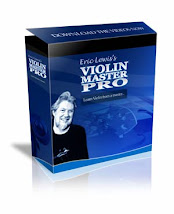Heres some great tips I found on a very informative website. www.violincompany.co.uk/hints.htm go there to view the full, in depth post.
Hints and Tips To Buying A Violin
Unless you are an experienced violin player or teacher it can be very difficult to know what makes a good violin and if you are getting good value. This section tries to lay a few myths and to give you some sensible advice about making a choice.
What size violin?
The violin is one of the best instruments for young children to learn because it is available in so many small sizes from full size, known as 4/4 down to 1/16. A 1/16 violin is very small indeed and is only suitable for a very young child. By the time a child reaches primary school they will normally be big enough to play a 1/4 or 1/2 size instrument and after a year or two a 3/4 size. Most children will be big enough to play a full size violin by the time they have moved on to secondary school.
Why the Difference's in Price?
Student violins come in two basic types, mass produced and hand made. A mass produced violin will be made to a strict budget. The wood that is used will not be so well seasoned or such good quality and most of the carving will be done by machine. A hand made instrument will take much longer to make. The wood that is used will be carefully selected from much older and better seasoned stock and the carving will all be done by hand.
Are All Strings The Same?
A resounding NO to this. Changing the type of strings on a violin can have a profound affect on the sound of the instrument. When the violin was first invented, strings were made of animal sinew (catgut). This type of string produces a mellow sound but is notoriously difficult to keep in tune as they are greatly affected by temperature and humidity.
What's all this about "Setup"?
If a violin is to play well then the collection of parts like strings, bridge and tailpiece have to be in the right place and also the right size and shape. The bridge must have it's feet adjusted so that they match the curve of the belly of the violin. The curved top of the bridge must match the curve of the fingerboard and hold the strings the right height above it and at the correct distance from each other. The soundpost must be correctly fitted and the pegs must rotate smoothly but not slip once the strings are tuned.
Dont forget to visit this site for the full Hints and Tips on buying a violin and lots more informative resources. www.violincompany.co.uk/hints.htm
Purchase Violin Lessons Online Here
Wednesday, 8 April 2009
Subscribe to:
Post Comments (Atom)





No comments:
Post a Comment